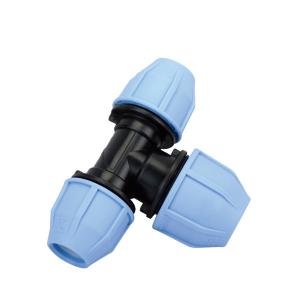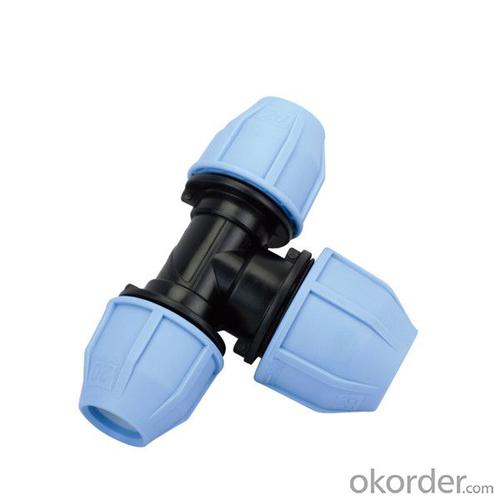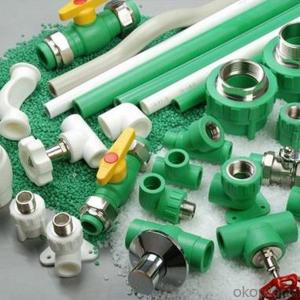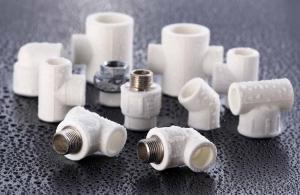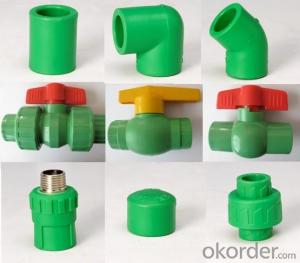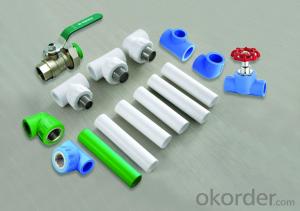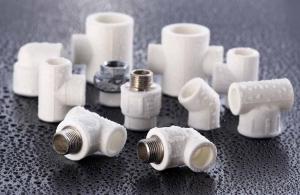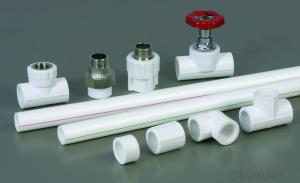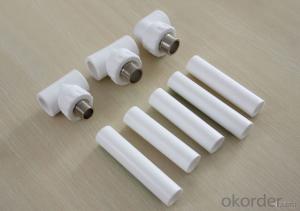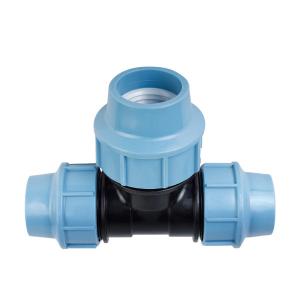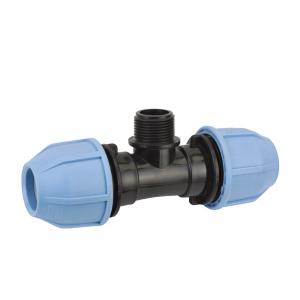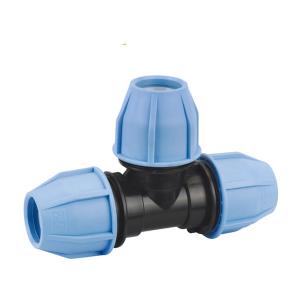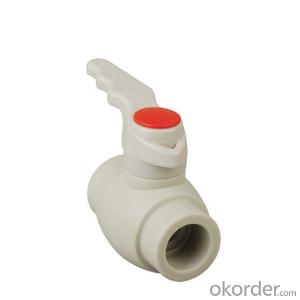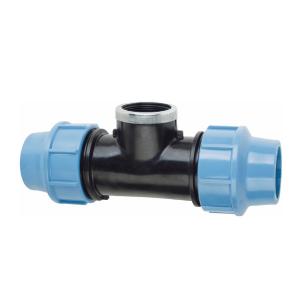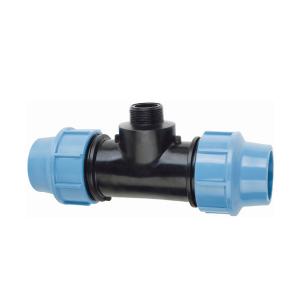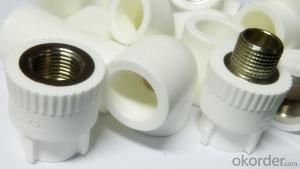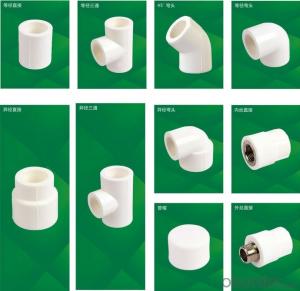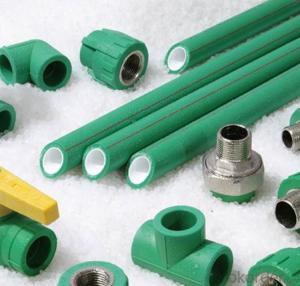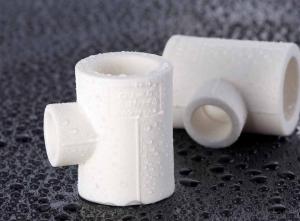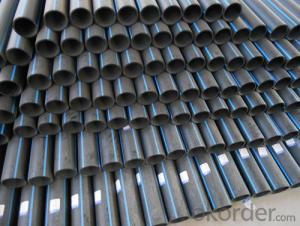High Quality 90 Tee with Increased Take Off - 3 Inch Plastic Pipe Fittings
- Loading Port:
- Ningbo
- Payment Terms:
- TT or LC
- Min Order Qty:
- 1000 watt
- Supply Capability:
- 100000 watt/month
OKorder Service Pledge
Quality Product, Order Online Tracking, Timely Delivery
OKorder Financial Service
Credit Rating, Credit Services, Credit Purchasing
You Might Also Like
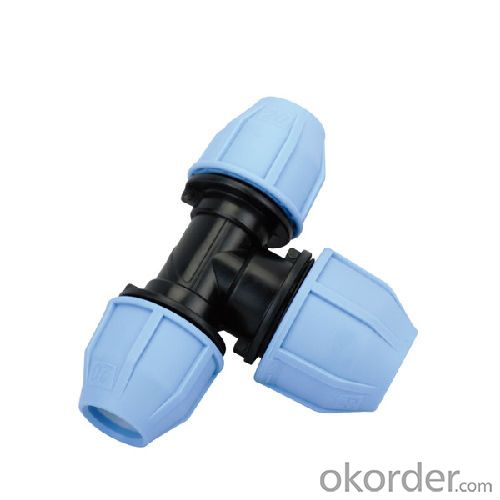 1.It is used in industrial fields, agriculture and garden irrigation 2. Beauty appearance.3.Thermal insulation and energy saving.4. Easy installation 5.excellent heat resistance and pressure resistance 6. affordable price
1.It is used in industrial fields, agriculture and garden irrigation 2. Beauty appearance.3.Thermal insulation and energy saving.4. Easy installation 5.excellent heat resistance and pressure resistance 6. affordable price
1.Material:Random Polypropylene(Hyosung R200P);
2.ISO9001&ISO14001;
3.Standard:GB/T 18742.3-2002, DIN8077/8078;
4.OEM also ok
- Q: Can plastic pipe fittings be used for irrigation in horticulture?
- Yes, plastic pipe fittings can be used for irrigation in horticulture. They are commonly used due to their durability, affordability, and resistance to corrosion. Plastic pipe fittings are easy to install and can withstand the varying weather conditions in outdoor horticultural settings.
- Q: What are the differences between electrofusion welding, hot melt welding and welding connection?
- The welding is to melt the other solder and to connect the parts, the most common are metal welding, welding plastic plates and so on.
- Q: Can plastic pipe fittings be used for irrigation systems in sandy soils?
- Yes, plastic pipe fittings can be used for irrigation systems in sandy soils. Plastic pipe fittings are commonly used in irrigation systems due to their durability, corrosion resistance, and ease of installation. They can withstand the sandy soil conditions and provide a reliable and efficient irrigation system.
- Q: Plastic pipe fittings and plastic doors and windows on the stain in what way?
- With the immersion of detergent in warm water, and then wipe with a sponge that wash water. Then wipe it with a dry towel.
- Q: Are plastic pipe fittings resistant to solvents?
- Yes, plastic pipe fittings are generally resistant to solvents. Their resistance depends on the specific type of plastic used, but many plastic pipe fittings are designed and manufactured to withstand exposure to a wide range of solvents without degradation or damage. It is important to consult the manufacturer's specifications or guidelines to ensure compatibility with specific solvents.
- Q: How do you remove a plastic pipe fitting?
- To remove a plastic pipe fitting, you can follow these steps: 1. Turn off the water supply: Before removing any pipe fitting, it is essential to turn off the water supply to prevent any leaks or accidents. 2. Prepare the area: Clear the surrounding area of any obstructions or debris that may hinder your work. 3. Identify the type of fitting: Determine the type of plastic fitting you are dealing with. Common types include compression fittings, push-to-connect fittings, or threaded fittings. 4. Compression fittings: For compression fittings, you will need two adjustable wrenches. Use one wrench to hold the fitting in place while using the other wrench to turn the nut counterclockwise until it comes off. 5. Push-to-connect fittings: Push-to-connect fittings typically have a release mechanism built into them. Locate the release collar near the fitting, then push it down firmly towards the pipe while pulling the pipe away from the fitting. This will release the connection. 6. Threaded fittings: Threaded fittings require the use of a pipe wrench or adjustable wrench. Place the wrench on the fitting's body or hex section and turn it counterclockwise to loosen and remove the fitting. 7. Inspect and clean: Once the fitting is removed, inspect the pipe and fitting for any damage or debris. Clean the pipe end and the inside of the fitting to ensure a proper connection when reinstalling it or replacing it with a new fitting. Remember to exercise caution and follow safety guidelines when working with plumbing systems. If you are unsure or encounter any difficulties, it is advisable to consult a professional plumber.
- Q: Are plastic pipe fittings resistant to bacterial growth?
- Yes, plastic pipe fittings are generally resistant to bacterial growth. The smooth, non-porous surface of plastic pipes makes it difficult for bacteria to adhere and multiply. Additionally, many plastic pipe materials, such as PVC and CPVC, have inherent antimicrobial properties that further inhibit bacterial growth. However, proper installation, maintenance, and regular cleaning are still necessary to ensure optimal hygiene and prevent any potential bacterial contamination.
- Q: How do you remove plastic pipe fittings?
- To remove plastic pipe fittings, you can follow these steps: 1. First, turn off the water supply to the pipe you are working on. This will prevent any leaks or water damage during the removal process. 2. Use a pair of pliers or a wrench to loosen the fitting. Grip the fitting firmly and rotate it counterclockwise to loosen it. If the fitting is stuck or too tight, you can use a pipe wrench or adjustable spanner for more leverage. 3. Once the fitting is sufficiently loosened, you can try pulling it straight off the pipe. If it doesn't come off easily, you can use a pipe cutter or hacksaw to carefully cut the plastic pipe just above the fitting. This will allow you to remove the fitting without damaging the rest of the pipe. 4. After removing the fitting, inspect the pipe for any damage or debris. Clean the pipe and fitting ends thoroughly before installing a new fitting. Remember to take necessary precautions, such as wearing gloves and eye protection, as you work with tools and potentially sharp edges.
- Q: How do you connect plastic pipe fittings to HDPE pipes?
- To connect plastic pipe fittings to HDPE pipes, you typically use a method called butt fusion. This involves heating the ends of both the fittings and the HDPE pipe until they reach a melting point. Once melted, the ends are pressed together and allowed to cool, creating a strong, leak-proof connection.
- Q: Are plastic pipe fittings suitable for high-pressure systems?
- No, plastic pipe fittings are generally not suitable for high-pressure systems as they may not have the required strength and durability to withstand the pressure levels. Metal fittings are generally recommended for high-pressure systems.
Send your message to us
High Quality 90 Tee with Increased Take Off - 3 Inch Plastic Pipe Fittings
- Loading Port:
- Ningbo
- Payment Terms:
- TT or LC
- Min Order Qty:
- 1000 watt
- Supply Capability:
- 100000 watt/month
OKorder Service Pledge
Quality Product, Order Online Tracking, Timely Delivery
OKorder Financial Service
Credit Rating, Credit Services, Credit Purchasing
Similar products
Hot products
Hot Searches
Related keywords
